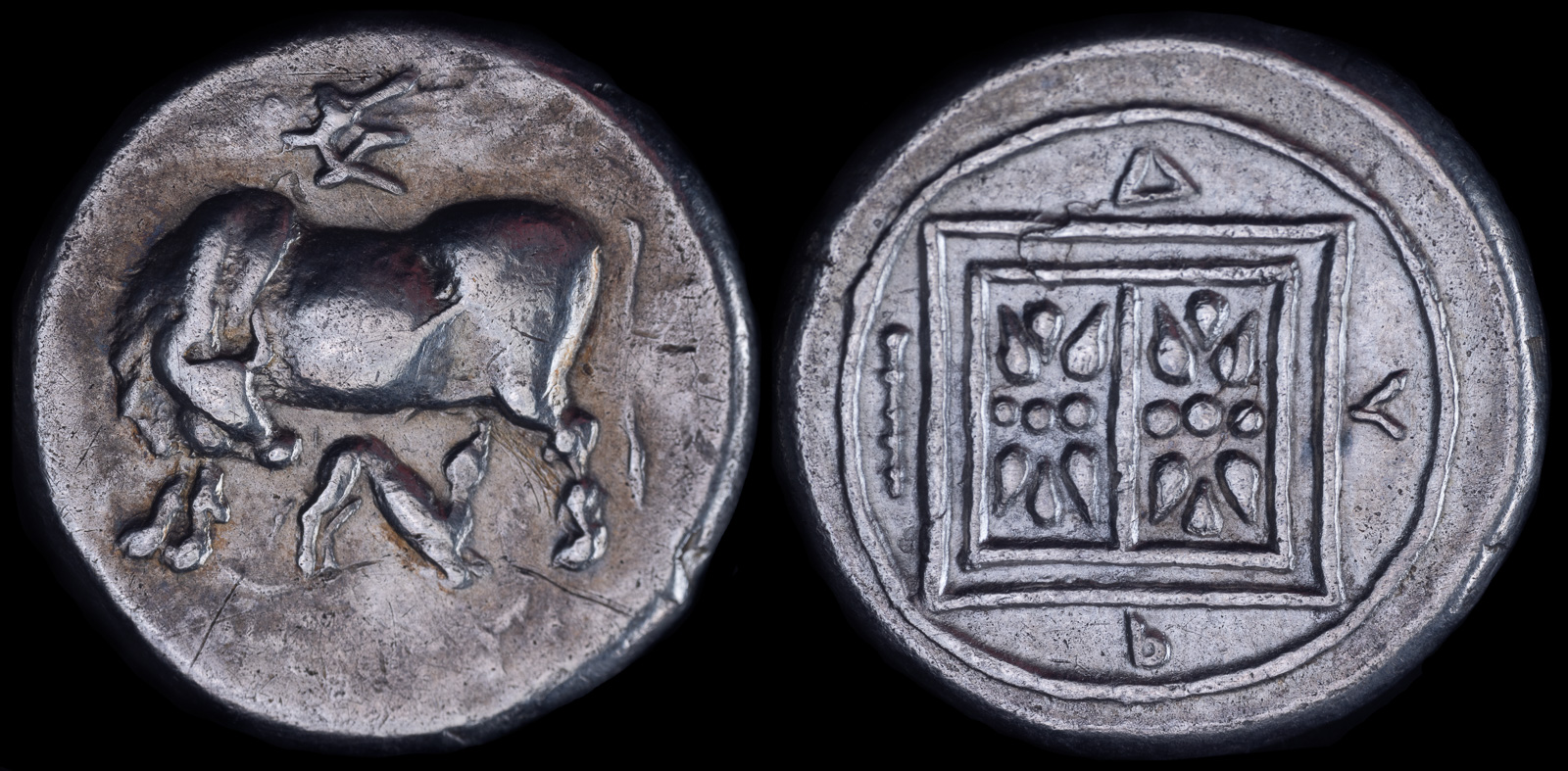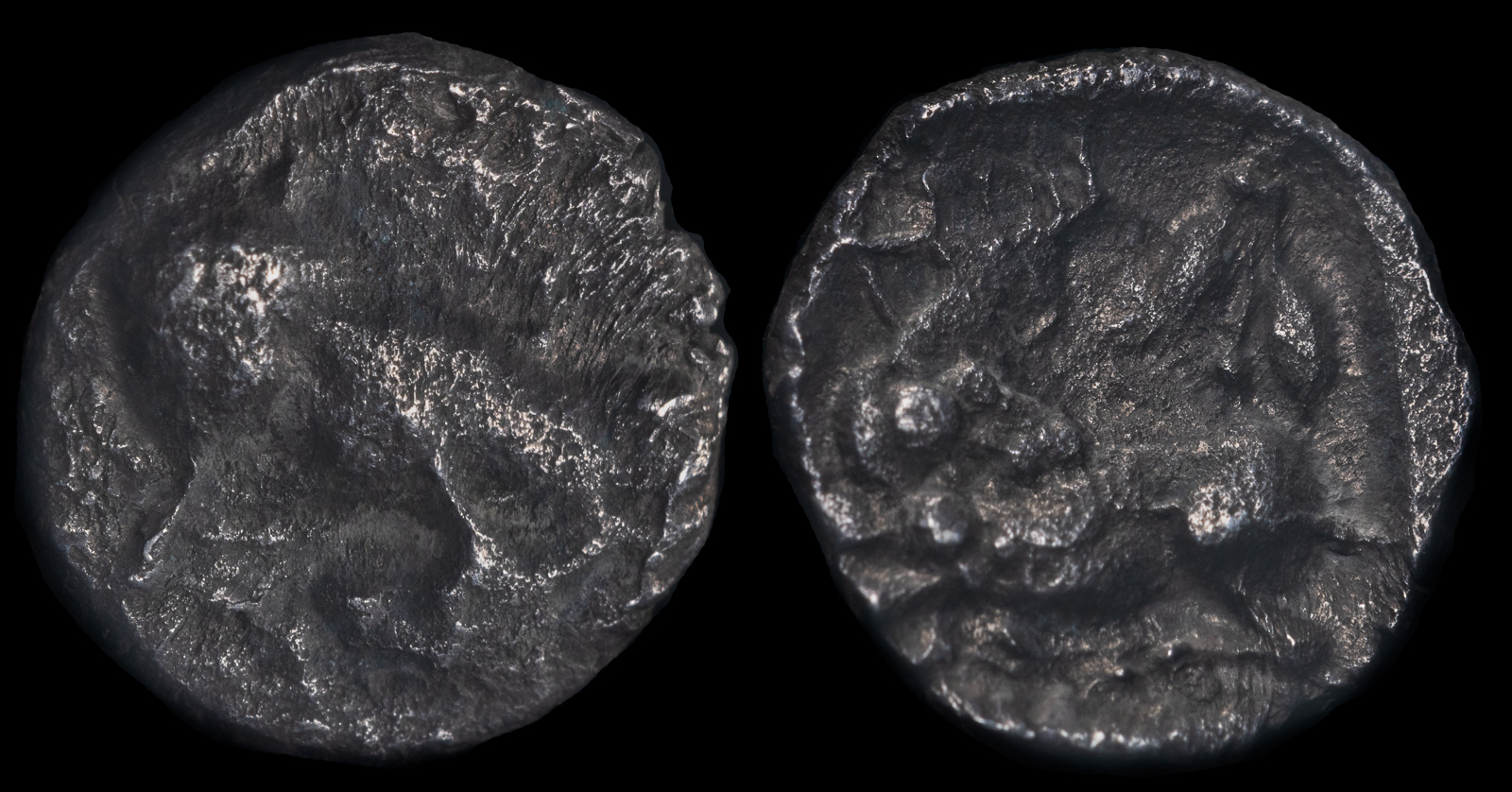Calf
View All Tags
In religious and sacrificial contexts, the calf was often used as an offering to gods, particularly those associated with agriculture, fertility, and the harvest. The act of sacrificing a calf was seen as a way to ensure the fertility of the land and the prosperity of the community. On ancient coins, a calf depicted alongside other sacrificial imagery could serve as a reminder of divine favor and the importance of ritual offerings in securing agricultural abundance. In some cases, the calf could be associated with Apollo, Demeter, or other gods who were linked to the fertility of the earth, harvests, and agricultural prosperity.
The image of the calf on ancient coins could also carry connotations of strength and youthful vigor. As a young animal, the calf symbolizes the potential for growth and the future, representing not only the next generation of livestock but also the vitality and endurance of a society. In this sense, the calf was more than just an agricultural symbol; it could evoke the idea of renewal, the ongoing cycle of life, and the vigor of youth that drives a community forward.
The calf’s appearance on coinage could also reflect a connection to wealth and economic prosperity. In societies where cattle were a significant form of wealth, the calf was a valuable commodity and a direct representation of a community’s economic resources. Coins depicting calves might have been issued by cities or rulers seeking to emphasize their agricultural wealth or to signal the fertility and productivity of the land under their control. In this context, the calf acted as a visual cue of the land’s bounty and the ruler’s ability to protect and nurture it.

Kingdom of Illyria, Monounios
Dyrrhachion
Circa 305-275 BCE
AR stater 21mm 10.57g 5h
Obv: cow standing left, looking back at suckling calf standing right below; monogram above.
Rev: double stellate pattern divided by line, all in double linear square border; ΔYP (P retrograde) and club around; all within linear circle border.
Paškvan-; Maier 34 var. (same); Meadows, CH (forthcoming) 193; SNG Copenhagen-425 var. (orientation of obv.); BMC-29 var. (same).
ex Classical Numismatic Group 2015

Samaria. “Middle Levantine” Series
Circa 375-333 BCE
AR Obol 0.68g, 9mm
Obv.: cow standing right, head left, suckling calf.
Rev.: stag recumbent left, head right; olive spray to right. Aramaic SL above.
Meshorer & Qedar 148; Sofaer 229